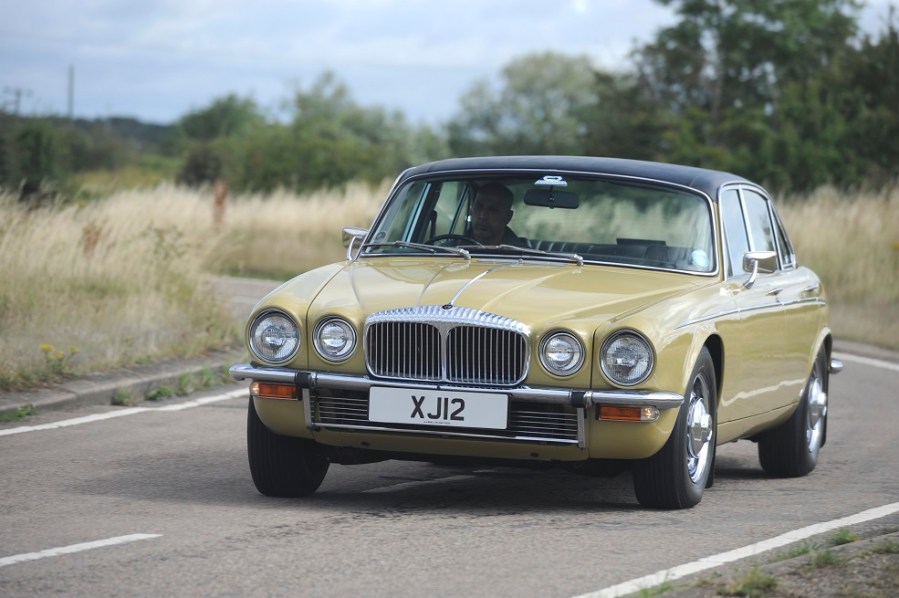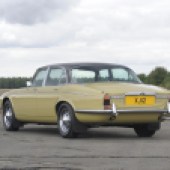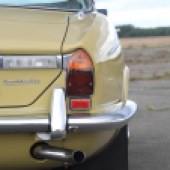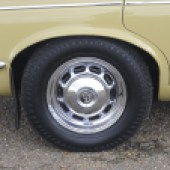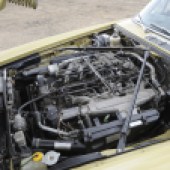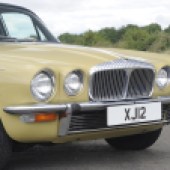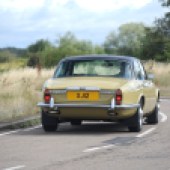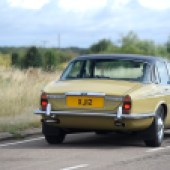The early 70s evolution of the Jaguar XJ remains one of the best examples of the breed. Here’s how to buy a Series 2 today
Launched in very late 1973, the Jaguar XJ Series 2 was a facelift of the 1968 original. The car was a response to worldwide safety and emissions legislation – predominantly centred upon the American market. It featured a redesigned nose with a higher bumper, redesigned fascia, and several other upgrades.
Initially available in two lengths, the short wheelbase body was relegated to the options list after a few short months. Likewise the 2.8-litre engine, officially listed but never encouraged, was dropped in 1974 in favour of the reintroduction of the time-honoured 3.4-litre configuration.
Key to the Series 2’s changes was a brand new bodyshell. This featured side impact protection, and a vastly revised bulkhead design which sealed off the passenger compartment in case of an accident. Fibre-optic lighting and multi pin wiring plugs also contributed, thoroughly modernizing the design of the car. The bumper was raised, a shallower grille fitted with a more prominent surround, and a more sophisticated air conditioning system was fitted.
In addition to the new 3.4-litre engine, the 4.2 and 5.3 choices continued from the outgoing Series 1. Specifications were broadly the same too – Jaguar XJ6/12 and Daimler Sovereign/Double Six, with a Vanden Plas-trimmed Double Six at the top of the range. These weren’t just badged as such – rolling shells were taken to the Kingsbury works and finished by Vanden Plas trimmers, to the same standard as the DS420 limousine. From 1975, the Vanden Plas specification was also available on the 4.2-litre Daimler Sovereign – but not on the 3.4-litre.

The new car also begat the short-lived XJC, a model intended to launch as a Series 1 but delayed owing to production issues. The coupe was made available as a Jaguar and a Daimler, with 4.2-litre and 5.3-litre powerplants. Slow sales – which dropped further following the launch of the XJ-S – meant that this model was never going to continue beyond Series 2, and the last was made in 1977. Two years later, Jaguar replaced the Series 2 range with the Pininfarina-tweaked Series 3 – the car which would see out the Series XJ in 1992.
Exactly 127,961 Series 2 XJs were made, almost half of which were XJ6 4.2L models. And while they’re by no means in the Arthur Daley inspired doldrums pricewise, you can still get into a Series 2 XJ for as little as £8000. At that sort of price, it’s almost impossible to resist. Here’s what you need to know to buy a good one.
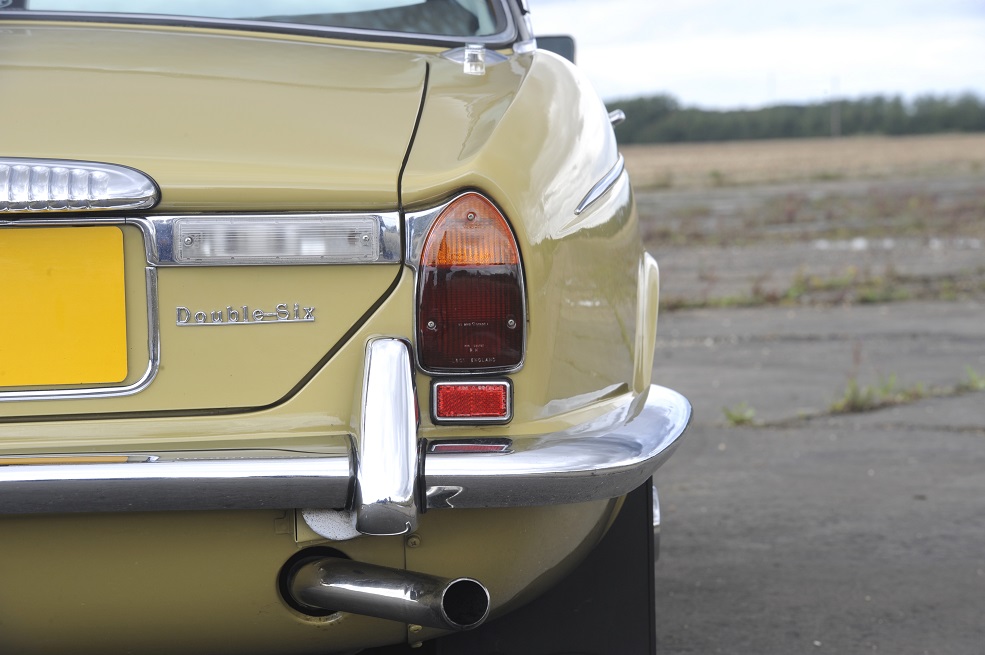
Bodywork
The bodywork is the most important thing to check when buying any XJ. They’re not easy cars to restore and not really a starter proposition. Doors aren’t common, and while wings can be had they’re often ludicrously expensive – well into four figures. Sills for a Coupe can be over £350, while a LWB saloon inner sill is still around £150. In many cases it’s better to repair what you have than try to source new panels.
A Jaguar is all about appearance, so even if the panels are solid you need to take a long hard look at the bodywork. How good’s the paint, and how old does it look? Older paint is a positive sign, as if the car looks straight with an older paint job the likelihood is that the metal underneath is fine. If it’s new, it could be hiding botched rust repairs or potentially enough P38 to justify shares in Isopon. We’d advise particular attention be paid to white cars, as there’s a chance they’ve been used in the wedding trade. Classic wedding hire cars are business tools rather than labours of love, and many repairs may have been effected cheaply to get the car back into service.
Screen surround rust is a big deal on these cars – caused by trapped moisture, you’ll find far more once the screen is out for repair. You’ll also have to remove the dashboard to do a proper job, and this shouldn’t be undertaken lightly. It’ll also mean you get water leaks in the cabin, so be suspicious if it smells damp inside. Water ingress in the boot is caused by the rear screen seal.
We shouldn’t need to tell you to check underneath an old car – especially an old Jag. Sills, floorpans, subframe mountings and chassis members are all favoured rot spots for the big cat, as are the rear suspension mounting points which you should ignore at your peril. You can buy repair sections for most of these areas, but beware that if the car you’re viewing has had repairs they may not have been done to the highest standard. Tread carefully.

Engine
Jaguar XJs used one of two engines – the XK six cylinder and the V12. The XK was most prevalent in 4.2-litre guise, though 3.4-litre models were also available and a trickle of very early 2.8s exist – albeit rare in UK spec.
The 2.8s can suffer with holed pistons, while it’s not uncommon to see head gasket issues on the 4.2 litre engine – our Series 3 project car suffered, and needed a full engine rebuild. 3.4 litre models are less prone to this consequence, though as with every XJ saloon it’s important to note that the smaller capacity six is slower and thirstier overall than the larger variant. The best bet for enjoyable ownership and resale would be a 4.2-litre model.
There’s no difference in tune between the models, though 1978 saw the introduction of fuel injection on the 4.2-litre model. Check all XK engines for oil pressure of at least 40psi, and don’t worry if the gauge shows less without double checking as the gauges can be a bit iffy. Even good ones can burn a bit of oil, so don’t worry about that.
The V12 is a thirstier and more complex engine, and in truth we wouldn’t recommend it to most. However, they’ve typically done fewer miles and been better cared for, and if you’re only doing a couple of thousand miles a year the difference in fuel and servicing costs could be less than you’d expect. The V12 got fuel injection in 1975, and was renamed XJ5.3 briefly. It was felt there was less social opprobrium in driving a 5.3 litre car than a V12 during a fuel crisis, but Jaguar soon corrected its mistake with a name reversion.
Check the cooling system is up to scratch, and make sure that what feels like a misfire isn’t actually an engine running on 10 or 11.
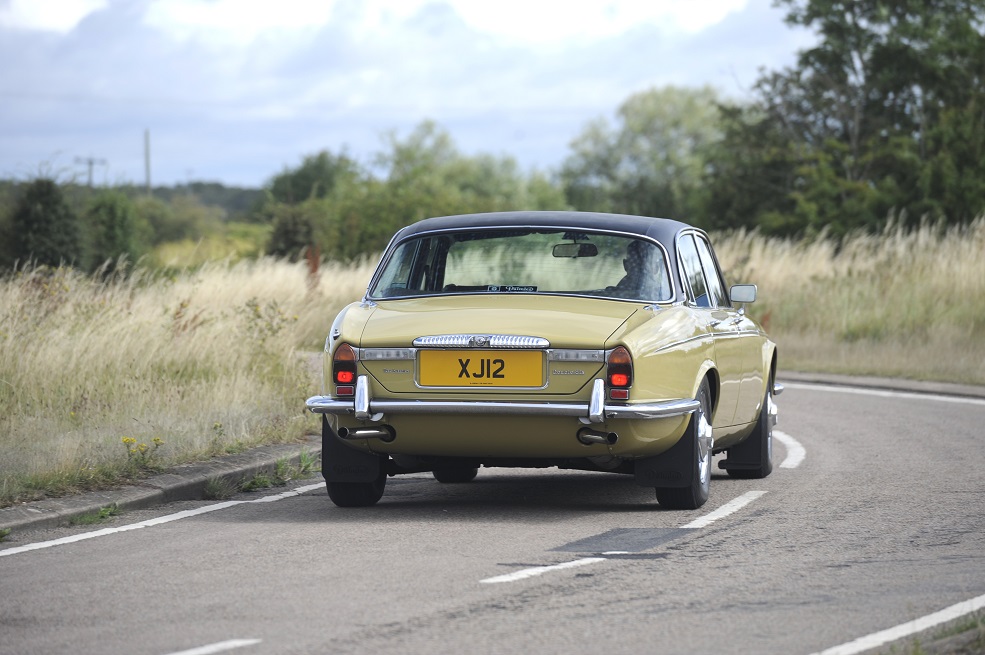
Transmission
Most XJs are automatic, using various Borg Warner automatic gearboxes in the sixes and the GM Turbo Hydramatic 400 series in the V12. These boxes are well known to automatic transmission specialists and very strong, reliable boxes in service. Manuals initially used the four speed Jaguar gearbox with optional overdrive, though in 1978 this was changed to the five speed LT77 from the Rover SD1. Both boxes are strong, though clutch changes involve engine removal and neither is as slick as you’d expect of a car in this class. It would pay to stick with an automatic unless you’re adamant you need to change your own gears. Many agreed in period, so the likeliest manuals are poorly specified 3.4s.
Suspension, steering and brakes
Suspension clonks at the front are common, and a fault Jaguar still hadn’t got right twenty years on. They’re caused by worn shock absorber bushes, and relatively easy to fix. Rear suspension can sag with age, but unless you drive a “sorted” example it happens so gradually you won’t notice. Bank on needing to rebuild the rear suspension of any XJ you find for sale, and if it’s already been done see that as a bonus.
Power steering racks can fail, but are available on an exchange or reconditioned basis.
The inboard rear discs are the source of all Series XJ-specific braking issues. The handbrake adjuster is mounted above them and is a tricky job to adjust – though possible, it’s worth negotiating money off if the handbrake isn’t up to scratch. Find out when the pads were last changed too, as it’s another unpleasant job. And because of where they’re located, make sure the diff isn’t leaking oil onto the rear brake pads.
Beyond that it’s all pretty basic stuff, make sure the brake lines aren’t corroded and that the discs aren’t warped.

Interior and electrics
While most XJs come with leather seat facings and Ambla secondary trim, some left the factory with cloth seats as an option. Not only is cloth trim a rare option to find, but many owners find it less desirable than leather these days. It’s certainly going to be harder to source good used cloth trim than leather, and harder for an upholsterer to effect a convincing repair to damaged trim.
You’ll find items such as air vents and the steering wheel shared with the pre-HE Jaguar XJ-S, and the glass is interchangeable with the Series 1. Companies such as John Skinner Ltd can supply replacement foams, leather covers and carpets new.
For their era XJs were well specified, and it’s important to make sure as much of the equipment as possible is in working order. Electric windows, central locking, air conditioning, heated rear windscreens. While it’s unlikely you’ll find a car with air con converted to R134a gas, make sure all the toys function as intended electrically if you want to avoid bills later on.

Jaguar XJ Series 2: our verdict
Be honest, most of us have fancied a Jag at some point – whether through the Sweeney, or Minder, or maybe even because your boss had one in your first job. We’ve all looked and thought “maybe” – and at the money there’s no excuse as to why you can’t buy one if you’re canny.
The best bargains can be found in V12 flavour, although the cost-conscious might want to spend out on a 3.4-litre instead. These are worth less than the 4.2, without the complication inherent in the V12 engine. The best buy to sell on again is without doubt the XJ-C coupe, as there will always be a market for this beguiling and beautiful two-door model.

